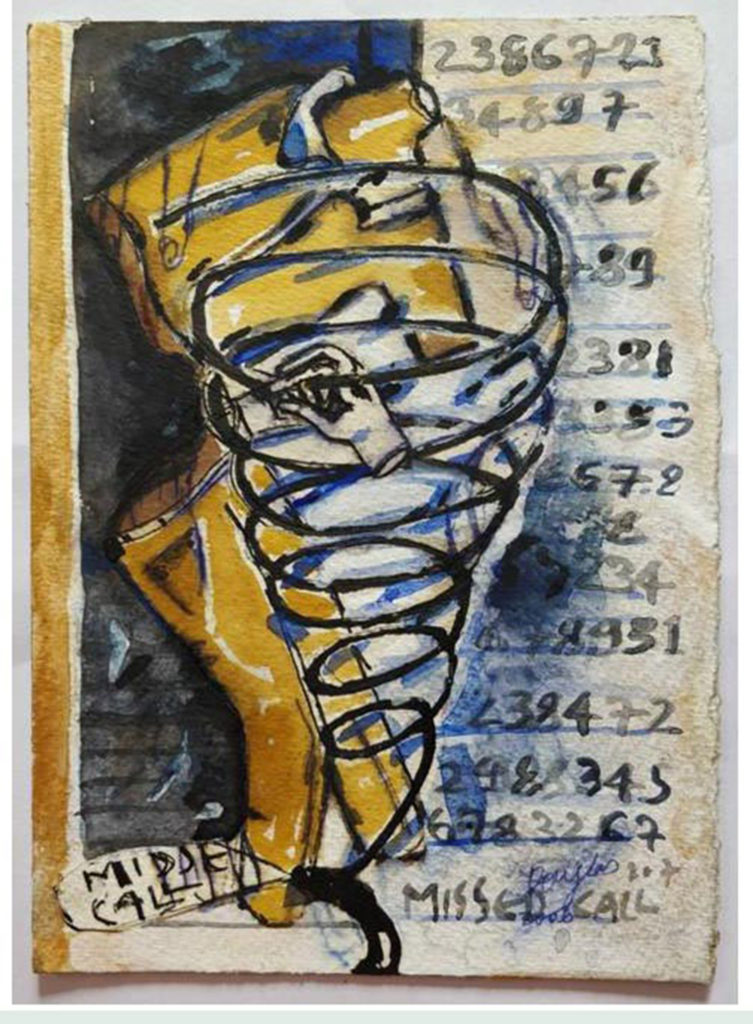Team Life&More
Chennai-based artist C Douglas’ works, by which one also means his life, since the two cannot be separated, are a constant process of negotiation. These include several identities – as an artist from another state living in Chennai; as an artist from within Chennai who lives in the Cholamandal Artists’ Village and as an artist who is an integral part of the Madras Art Movement but creates work that cannot be easily fitted within the nativist ideology of the movement. While such identity dilemmas confront most artists, Douglas is not only conscious of it but this awareness also informs his art. As a result, he sees himself as an insider/outsider in various contexts, with a predominating sense of being the latter.
A solo show of paintings in mixed media on canvas and paper, In Search of Fragments by C Douglas are now showing at Akar Prakar, D-43, First Floor, Defence Colony, New Delhi till July 28 between 11 am and 7 pm. Born in Kerala in 1951, C Douglas is one of the most collected artists of the Madras Art Movement. Douglas’ works in this exhibition capture his journey from the 1990s until the last few years. The works from the 1990s mark the time when he had begun working on his characteristic grey works, influenced by German Expressionists. To him, this neutral colour represented a liminal state that embraced vulnerability over heroism and uncertainty over finality. Crumpled and coated with sand and grey pigment, these paintings have an inherent ‘slowness’ as the images, of lighthouses, fetal forms and nebulous figures, slowly emerge into view due to the way they catch light. Unhurried and muffled, his paintings have the quality of an echo where there is both a presence and an absence.
Following the Missed Call series, Douglas embarked on The Blind Poet and Butterfly series (2012). This series marked a shift in his style wherein he takes his work forward not by building upon the flat coloured, sparse imagery of his previous Missed Call series but by returning to a much earlier style of working that was densely coloured and layered. This non-linear method of reference is reflective of his larger engagement with recurrence in his The Blind Poet series wherein the subject (poet) becomes the style (poetic) and vice versa. Metamorphosis and transformation are constant concerns in these works as Douglas makes repetitive use of images of butterflies, cocoons and caterpillars. The open-ended nature of the meaning making process is evident even in the dynamics between the poet and his art; the butterflies although originating from the poet, once created, no longer remain only in his sand crusted and tactile world as they glow in shades of ultramarine and red ochre.
“There is so much of stress on the body in the South. Santhanaraj’s work had bloody bleeding lines. They are expressive. Similarly Joseph James talks about Paniker’s ‘nervous lines’. They are like body or palm prints,” he says. In Douglas’ works of the 1990s, he brings the body into his work through the material. He stains the paper with tea, crumples the paper to create texture, stitches it and applies sand. In a process that evokes the regenerative metaphor of the earth and rain, he uses water-based pigments that penetrate deeply, soaking the paper and becoming one with it.
